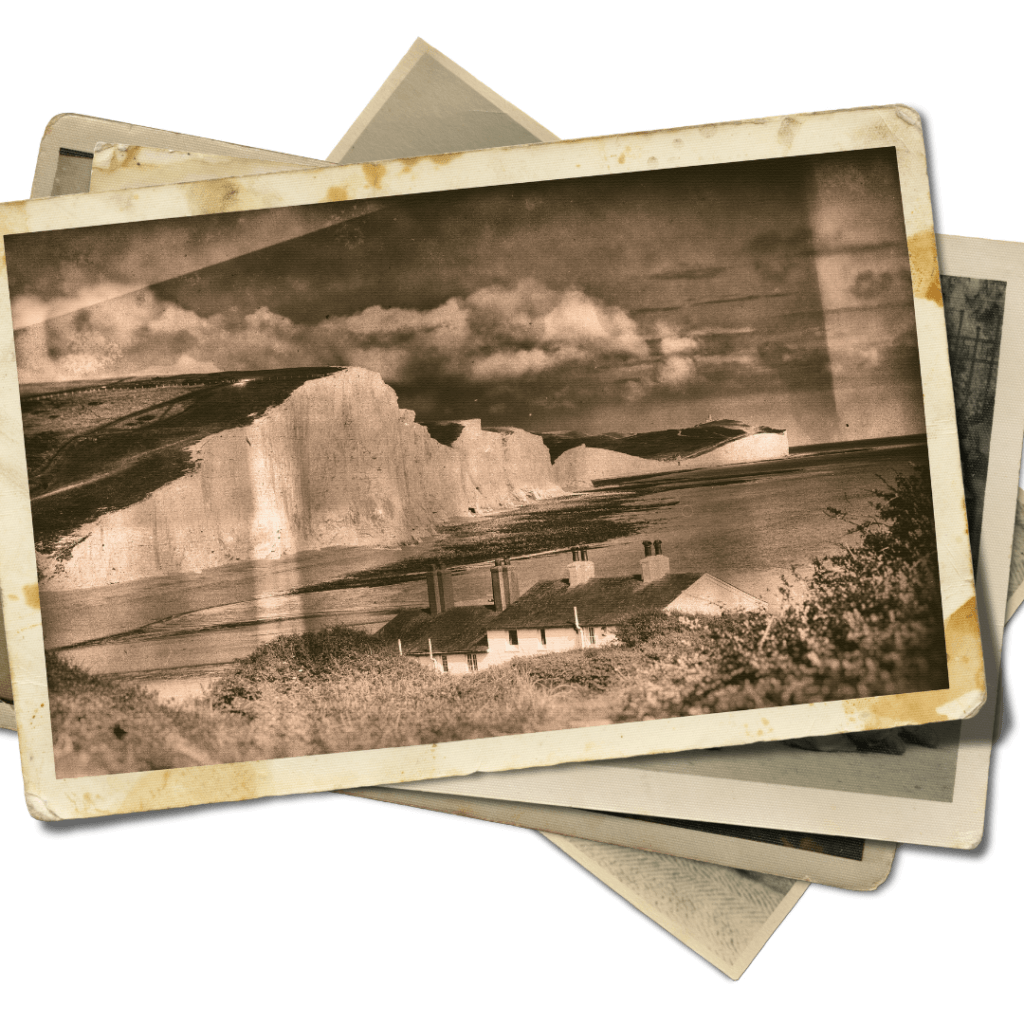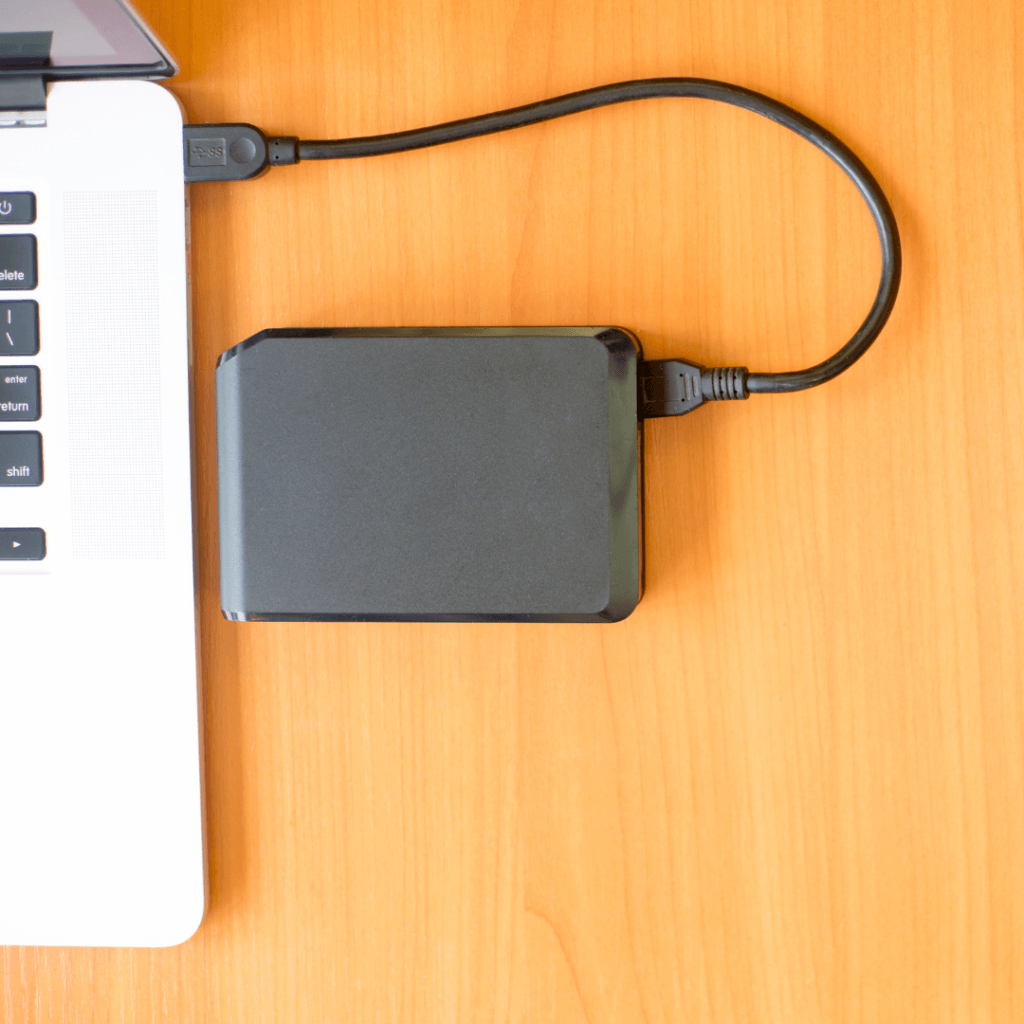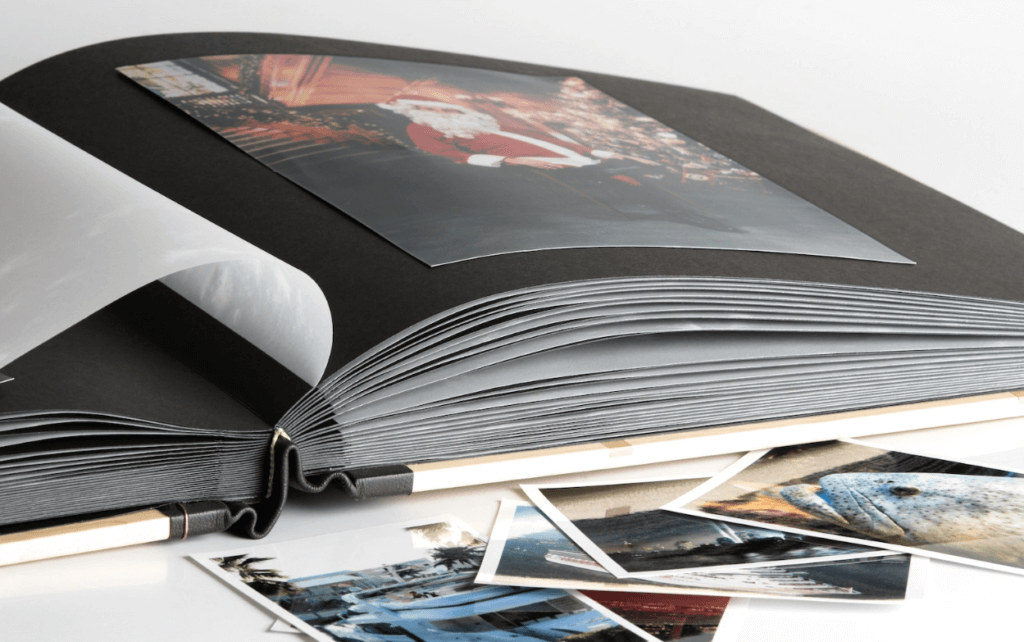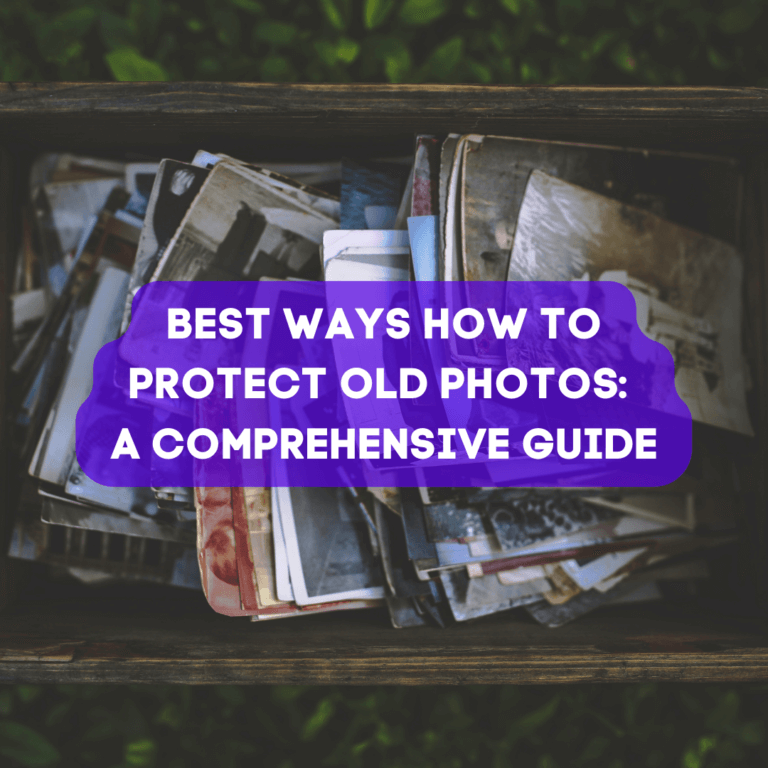Protecting old photos is essential to preserving the precious memories and valuable family history they hold. These photographs offer a glance into the past, reminding us of the people, places, and moments that have shaped our lives. However, without proper protection, they can fade away with time due to environmental damage, mishandling, or loss.

In this comprehensive guide, we’ll discuss how to protect old photographs, including assessing the current state of your photos, the best methods for protecting them, restoring damaged photos, and best practices to keep them safe. By following the guide in this blog, you can ensure that your old photos last for generations to come, preserving your family’s legacy.
So, whether you want to protect old photos that you have or plan to keep, or you want to ensure that future generations can enjoy them, read on to learn about the best ways of protecting old photos.
Assess the current state of your photos
Taking the proper measures to protect old photos begins with assessing their current state. This step will allow you to identify any potential risks and damage, so you will be able to take the necessary steps to protect them in the future.
How to identify potential risks
The first step in assessing the state of your old photos is to identify potential risks. Some common risks that old photos face include water damage, exposure to sunlight, humidity, and pests. Water damage can cause photographs to stick together or become discolored, while exposure to sunlight can cause them to fade or discolor. Humidity and pests, such as rodents or insects, can cause mold or even physical damage.
Understanding different types of damage
It is essential to know the different types of damage that old photos can sustain so you can protect them from being lost or destroyed. There are three main types of damage that old photos can sustain:

- Physical damage: This includes scratches, tears, creases, or folds.
- Chemical damage: This type of damage occurs when photographs come in contact with chemicals that can cause fading or discoloration. This can happen when photographs are stored near chemicals such as cleaning products or pesticides.
- Environmental damage: This damage occurs due to environmental factors such as exposure to sunlight, humidity, or water damage.

Conducting a visual inspection
The best way to discover the condition of your old photos is to conduct a visual inspection of each photo. Take a look at each photograph individually and look for signs of damage, such as discoloration, fading, or tears, and note any signs of damage. In addition to checking the back of the photographs, you should also make sure that they are clean and free of any residue.
There are a several ways that you can protect your old photographs by identifying potential risks, understanding different types of damage, and conducting a visual inspection to assess the current state of the photos and taking necessary action to protect them.
Best ways to protect Old Photos
Taking steps to protect your old photos is the next step after you assess the state of those photos. There are two main methods of protecting old photos: digital storage as well as physical storage, with each of them having its own advantages.
Digital storage
Having a digital backup is one of the best ways to protect old photos from physical damage or loss. Below are some of the best ways to save your old photographs digitally:
- Cloud storage: You can store your old photos on cloud storage services such as Google Drive, Dropbox, or iCloud. These services offer secure and reliable storage and are accessible from anywhere with an internet connection.

- External hard drives: This method is the most affordable way to store old photos. External hard drives are made to be portable, so you can take them anywhere, and they offer high-capacity storage.

- Online photo storage platforms: There are many online photo storage platforms such as Flickr, SmugMug, or Shutterfly. These platforms offer secure storage, backup, and sharing options for your old photos.
Physical storage to Protect Old Photos
You may want to store old photographs physically in order to protect them, especially if you want to display them. Here are some methods that can be used to store old photographs physically:
- Archival photo albums: Archival photo albums are specifically designed to protect old photos from damage. They’re made of acid-free materials that prevent chemical reactions that can cause fading or discoloration.

- Acid-free sleeves and storage boxes: Acid-free sleeves and storage boxes are a cost-effective way to store old photos. These products protect photos from environmental factors such as light, humidity, or pests.
- Framing and display: If you want to display your old photos, framing is an excellent way to protect them. Frames protect photos from light and environmental factors and also make them easy to view.
Best practices
To protect old photographs, there are several best practices and things that you can do, apart from storing them digitally and physically:
- Handling: Always handle old photos with clean hands, and avoid touching the surface of the photo. Use gloves if possible.
- Labeling: Label each photo with information such as the date, location, and people in the photo. This information will help future generations understand the context of the photo.
- Storing in a safe place: Store old photos in a safe place, away from direct daylight, humidity, or extreme temperatures. A cool, dry, and dark place is ideal for storing old photos.
In order to ensure that your old photos are properly protected for generation after generation, make sure to follow these best practices.
Restoring damaged photos
Some of the best ways to restore damaged old photos are listed below. Old photos sometimes get damaged over time because of various environmental factors, such as humidity, light exposure, or mishandling. Fortunately, damaged old photos can be restored if you apply the right methods and techniques.
DIY methods
If you are familiar with photo editing software, you can try some of the DIY methods you can use to repair old photos. These are a few methods you can try:
- Scanning and editing: Scanning your old photos at a high resolution and using photo editing software such as Photoshop or Lightroom can help restore damaged photos. You can adjust brightness, contrast, and color levels to improve the quality of the photo.
- Tape and adhesive removal: Old photos may have tape or adhesive residue on them. You can remove the residue by using a rubber eraser or a mixture of water and baking soda.
- Color correction: Old photos may have faded or discolored over time. Color correction tools in photo editing software can help restore the original color of the photo.
Professional restoration
You may want to consider getting professional restoration services if your old photos are severely damaged. Here’s what you need to know when seeking for a professional help in restoring old photos:
- How to find a reputable restoration specialist: Look for restoration specialists who have experience restoring old photos. Check their credentials and ask to see examples of their previous work. You can also read online reviews or ask for referrals from friends or family.
- Cost and turnaround time: Professional restoration can be expensive, depending on how big the damage and the complexity of the restoration. You should expect to pay anywhere from £40 to £400 or more per photo. The turnaround time can also vary, so be sure to ask about the estimated timeline.
There is no doubt that restoring damaged and old photos can be a time-consuming and expensive process. However, with the right tools and processes, you can make sure that your old photos are preserved for future generations.
Conclusion
The old photographs that we have are valuable treasures that allow us to preserve the history of our family as well as the memories associated with it. Because old photos are fragile, they can easily become damaged or lost over the years, making it a good idea to take all the necessary steps to protect them for generations to come.
We have discussed in this comprehensive guide some of the best ways to protect old photos, including ways to store and handle them digitally and physically, the best way to handle and store them, as well as ways to restore old photos yourself and professionally. As a result of assessing how well your photos are in their current state and applying these protection methods, you will be able to ensure that they will remain intact and continue to bring you joy in the future.
Finally, protecting old photos requires a great deal of attention and care, and we encourage you to act now to protect your own old pictures by following the tips and methods we have discussed in this article. Whether you choose to store your photos digitally or physically, make sure you handle and store them properly, and make sure you think about restoring them if they are damaged in any way. You can take these steps to help ensure that your family memories are preserved for years to come, and you can be sure that they are protected for many more years to come by following these guidelines.






